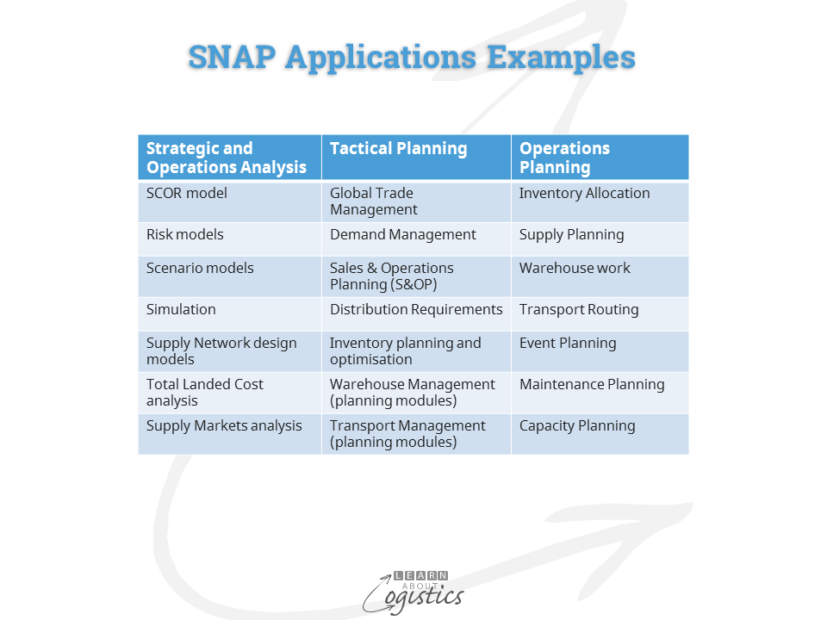Justify Supply Chain applications.
Justifying expenditure on software for Supply Chains is a tough sell – there are other functions with equal demands for money. It requires a careful definition of requirements, commencing with answers to a few basic questions. What are the business reasons for needing the application(s)? What are the criteria for evaluating and buying the software? What methodologies will be used in the evaluation? and Who will drive the evaluation and buying process?
Do not expect unbiased help from software suppliers. It is not the role of sales people to provide advise about your organisation. Their job is sell the products promoted in their company’s websites and brochures. Their selling skills will take them through what could be a long selling period and they want to win.
The majority of enterprises currently use an installed (or resident in the ‘cloud’) commercial system or one supplied as a ‘Software as a Service (SaaS). Therefore, your internal negotiations must agree on the approach to integration and/or interfacing additional Supply Chain applications. Integration requires one supplier to provide all applications within an ‘integrated’ business system; generically called an ERP system. Interfacing is to obtain the ‘best’ application(s) and interface them as the users and technologies require.
The Integrated system approach will likely be supported by Accounting and IT. The justification typically addresses the following points: all applications are integrated, so there are no data transfer issues between applications; integrated systems have the best accounting applications (because commercial systems are targeted at accountants?); other applications will be a ‘reasonable or acceptable’ fit within the total system and if anything goes wrong, there is only one supplier to call.
The ‘reasonable and acceptable’ fit for applications other than accounting misses the point that ‘other’ applications help to generate profits for the organisation. Examples are whether an ERP system is selected because it has a good accounts module, even though the included warehouse management system (WMS) is deficient of essential functionality, such that distribution cannot be fully effective? Or a situation where the operational planning requirements are for ‘make to order’ functionality, but the ‘better’ accounting modules are in ERP systems designed for ‘make to stock’. Who must accept the lesser functionality and therefore need to engage in workarounds?
Even so, the Integrated system arguments often wins, because it is the finance director who signs the purchase authorisation. But is this the best approach? My experience is that Supply Chain and Logistics executives have a difficult job to convince the Accounting and IT people there is another and potentially superior approach.
Selling the need for supply chain applications
As discussed in last weeks blog, organisations generally do not have the measurement systems for identifying the value of Supply Chains to the organisation. Logisticians are therefore limited to using cost reduction reasons as justification for the purchase of applications. In addition, few organisations have a Supply Chain Group (Procurement, Materials conversion and Logistics). This Group is responsible for the Core Supply Chains and providing market intelligence and analysis concerning the Extended Supply Chains and Supply Markets. It is therefore difficult to structure a proposal concerning the need for applications across functions if each function is only responsible for one part of the Supply Chains.
Two factors provide the overlay when developing the data and information requirements for Supply Chain applications:
- The high level of outsourcing by organisations, both manufacturing and distribution, means that analysis and planning activities should be driven by the needs of the network, not just the organisation
- IT applications used in Supply Chain address four levels of need. Most applications are grouped within Supply Network Analysis and Planning (SNAP), comprising: Strategic and Operations Analysis; Tactical Planning and Operations Planning. Examples are shown in the diagram below. The fourth level is Operations Scheduling and Control.

A feature of Analysis and Planning applications is that current data is required on a time phased, need to know basis – not instantaneous. The Operations Scheduling and Control level requires that current data is streamed from the Warehouse Control System (WCS), Material Handling Equipment (MHE) and automatic identification and data capture (AIDC) instruments for automated update, analysis and reporting. Also, for the future, consider the potential use of unstructured data streamed from: social media, demographic maps, weather and customer feedback (including warranties). These situations illustrate that Supply Chain applications do not have to be tightly integrated with applications serving other functions.
Instead, an organisation’s systems should be viewed as the ERP being the backbone. It contains the audit trail of transactions for sales order and receipts (‘quote to cash’), purchase orders and payments (‘procure to pay’), plus HR records and payroll and the accounting function. The selected SNAP applications would interface with the ERP system to exchange data and information. In this situation, rather than contemplate the acquisition of a new ‘integrated’ ERP system as the supply network environment changed, only some SNAP applications would need to be upgraded or replaced.
The trade-off is that although the SNAP applications approach will contain functionality that better suits your business, it is likely to take longer to select (although implementation can be a similar time) and cost more to maintain than an ‘integrated’ ERP approach. Therefore, your Supply Chain Group must build a substantial argument to support its case, because Finance and IT will most likely support the lowest cost and less ‘challenging’ scenario.

